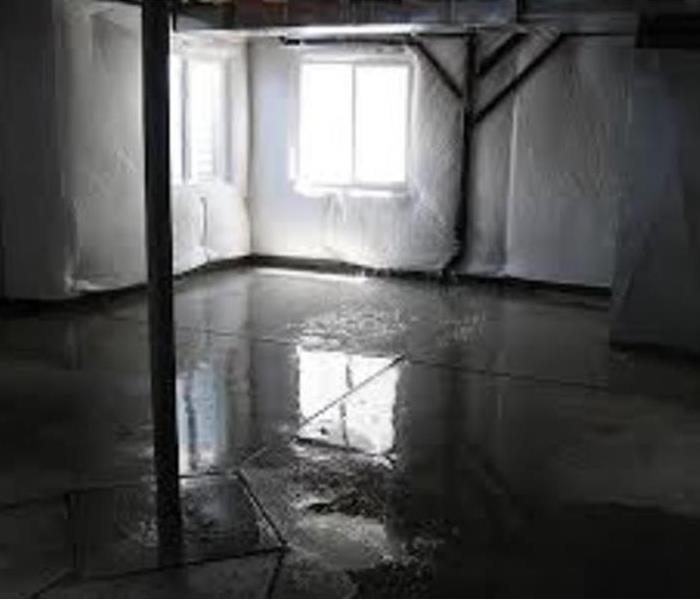5 Ways to Prevent a Soggy Basement
9/1/2022 (Permalink)
According to the National Flood Insurance Program (NFIP), floods are the No. 1 disaster in America. But did you also know that melting snow and ice poses a chilling risk for basement or other property-related flooding? Commonly known as winter thaw, rapidly melting snow and ice can quickly become a property owner’s worst nightmare, leaking into basements or other areas of home, leaving behind extensive water damage and destruction.
Other causes of basement flooding, or flooding in any area of a home or office, include flash flooding, burst pipes, cracks in foundation, poor lot grading, sewer back-up, and overfilled eaves, troughs and downspouts. What can homeowners do to lessen the risk? Prevention is the best approach to reduce the risk of flooding.
These tips on preventing basement flooding will help:
Fill and Seal Cracks
Look for cracks or gaps in walls, floors, windows and foundations that water can come through. Seal cracks as well as window wells. Use epoxy on foundation cracks and masonry sealer indoors. If the problem looks serious, call SERVPRO of Streamwood, Bartlett, West Chicago, and Warrenville.
Clean Gutters and Downspouts
Clean out gutters and downspouts of all debris and position downspouts away from your home’s foundation. Make sure downspouts are draining properly at least six and a half feet away.
Place Plants or Shrubs Around your Home
Plant shrubs, flowers or plants around your home and install porous pavement to help absorb as much excess water as possible.
Have a Plumber Install a Sump Pump
Have a plumber ensure your plumbing is in good condition and fix if it is not. If not already installed, have a plumber install a sump pump. It pumps water from sump basin and redirects it outdoors. Place it in the lowest part of the basement and regularly check to make sure it is clean. Also, sump pumps need power to work so think about having a back-up power source.
Avoid Blocking your Drains and Pipes
Don’t dispose cooking oil and grease down your drains as it can cause drain blockage. Try to avoid flushing objects down the toilet that could potentially block the sanitary pipe.
Bonus winter weather tip: When shoveling the snow from your driveway or sidewalk, toss it away from your home. Piles of snow next to your home often lead to water disaster.
Water mitigation is needed after plumbing failures or storms cause water to rush into your home, whether it’s the basement or another area of the home. Soaked rugs, damaged walls, warped flooring, and ruined furniture are only the beginning of the damages property owners will experience. It’s important to act quickly in the face of an emergency such as flooding from plumbing failure or storm water backup.





 24/7 Emergency Service
24/7 Emergency Service
